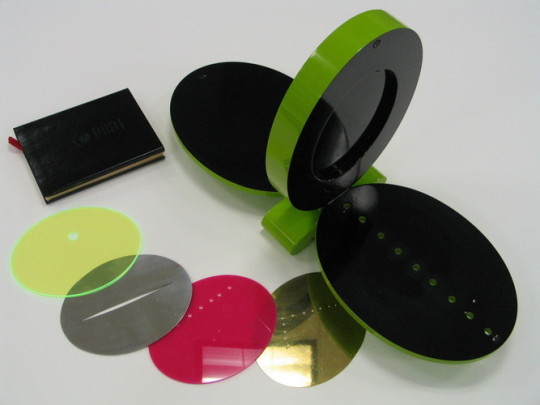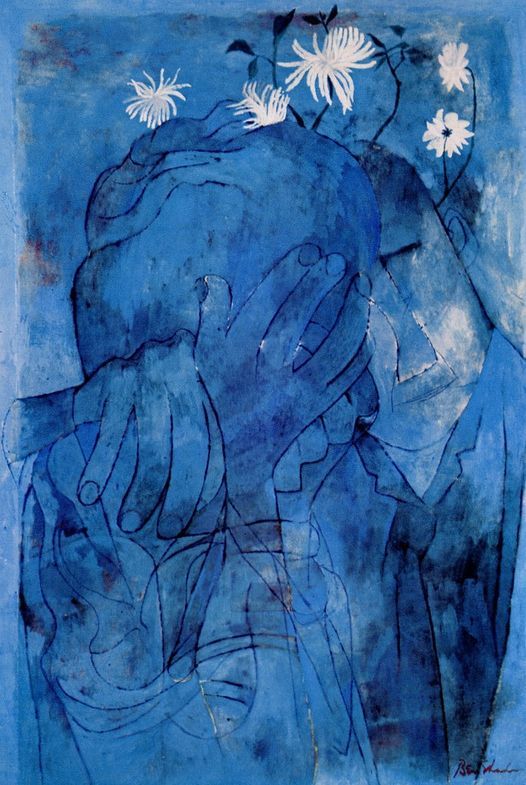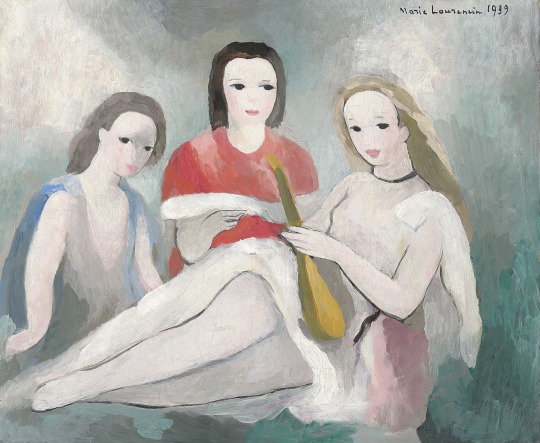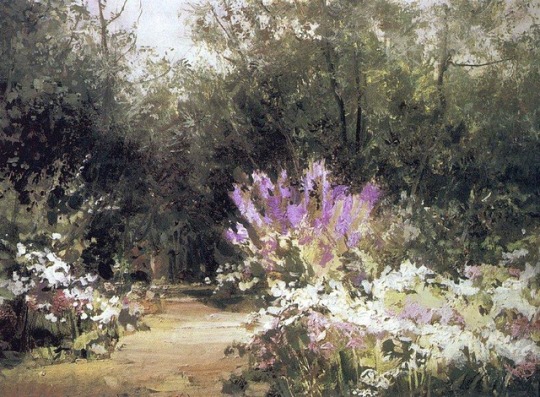Photo

Jenny Holzer, With You Inside Me Comes the Knowledge of My Death, 1994, Silver snake ring with inscription, sterling silver, 925/000, matt, centrifugal cast, hand-finished, in custom felt-lined wooden case1 5/8 × 3 3/8 × 2 1/8 in | 4.1 × 8.6 × 5.4 cm
3K notes
·
View notes
Photo



Mário Eloy, a Portuguese artist born in 1900, belonged to the first generation of modernists who led a tragic, misunderstood life. He started his artistic career as a cenographer, later moving to Paris where he became inebriated with the first modernist movements. But it was his moving to Berlin, in 1927, that would dictate his major artistic influence.
From a naïve cubism that didn’t really work its way through, Eloy reaches an expressionism that is born out of anonymous masks of African influence, expressive brushstrokes that disfigure the body and a dark theme that anticipates the social tragedy of the year of 1933. There, he married and had his first child, but upon leaving Germany in that same year, he would never see his wife and child again, who would later escape into Holland and eventually get sent into a concentration camp.
Several accounts described him as ‘the drunk’, mostly because of his peculiar way of talking, walking and his mannerisms, and also as influenced by an earlier bohemian lifestyle. But it was revealed in 1940 this was due to the artist suffering from Hungtinton’s disease, which would haunt him into his death.
A troubled man, Eloy poured the ghosts of his past and present into the canvas in the phantasmagorical way of Chagall and the grotesque visualization of George Grosz, the latter with whom he collaborated with Der Querschnitt. Bailarico (first picture, 1936) shows a common street dancing festivity in the streets of Lisbon, by the river, where the faces are transformed into anonymous masks put into a cold, detached scenario, turning the whole scene into the exact reverse of it: a rather tenebrist scene. The Poet and the Angel (1938, second picture) is a rather clear vision of what the artist had been through after separating from his wife and child, on the run from the nazi government. The green, decaying body was described earlier, in regards to other similar paintings, by Raoul Leal-Henoch as «green of rotting with gangrene stains», admitting his paintings were «forjed in hell, sinister hallucinations of a fantastic Other World, orchestrated by Satan».
The third painting, entitled View From My Window (1938) has a more macabre story behind. Recent x-ray analysis revealed another painting underneath, something that was usual of Eloy to do. Originally commissioned by a friend as a portrait of his daughter, Eloy promptly sketched what would be, for all artistic conventions, a portrait of a little girl, but instead presented this: the little girl’s funeral. It is uncertain why.
Mário Eloy died in 1951. He never lived to see the fame he would later receive.
144 notes
·
View notes
Photo

Jordi Sàbat - Los pájaros viven en las nubes, 2023
280 notes
·
View notes
Text
audrey hepburn posando para o artista brasileiro darcy penteado em Roma, 1971.

29 notes
·
View notes
Text



Oedipus and the Sphinx (Details), 1864 - oil on canvas.
— Gustave Moreau (French, 1826-1898)
524 notes
·
View notes
Text

Children fishing with dog, Ezio Quiresi (1960)
7 notes
·
View notes
Photo

Portrait of Antonin Artaud, Lucio Fontana, 1968, MoMA: Drawings and Prints
Monroe Wheeler Fund
Size: plate (each, irreg.): 7 3/8 x 5 ¾" (18.7 x 14.6 cm); page: 7 9/16 x 5 9/16" (19.2 x 14.1 cm); other (book): 7 ¾ x 5 13/16 x 1 1/16" (19.7 x 14.8 x 2.7 cm); overall (wood multiple, closed): 14 7/16 x 2 9/16 x 9 3/8" (36.6 x 6.5 x 23.8 cm); overall (wood multiple, open): 14 7/16 x 25 ½ x 9 3/8" (36.6 x 64.7 x 23.8 cm)
Medium: Multiple of wood and enamel with one copper die-cut plate, one steel die-cut plate, two plexiglass die-cut plates and one artist’s book
http://www.moma.org/collection/works/28536
9 notes
·
View notes
Photo

Nancy Spero letter to Lucy R. Lippard, October 29, 1971 [Lucy R. Lippard papers, 1930s-2010, Archives of American Art, Smithsonian Institution, Washington, D.C.]
971 notes
·
View notes
Photo

[Vesuvius from Mergellina], Giacomo Caneva, ca. 1855, Metropolitan Museum of Art: Photography
Gilman Collection, Purchase, Mrs. Walter Annenberg and The Annenberg Foundation Gift, 2005
Size: Image: 13.1 x 27.9 cm (5 3/16 x 11 in.) Mount: 26.7 x 43.5 cm (10 ½ x 17 1/8 in.)
Medium: Salted paper print from paper negative
https://www.metmuseum.org/art/collection/search/286574
12 notes
·
View notes








